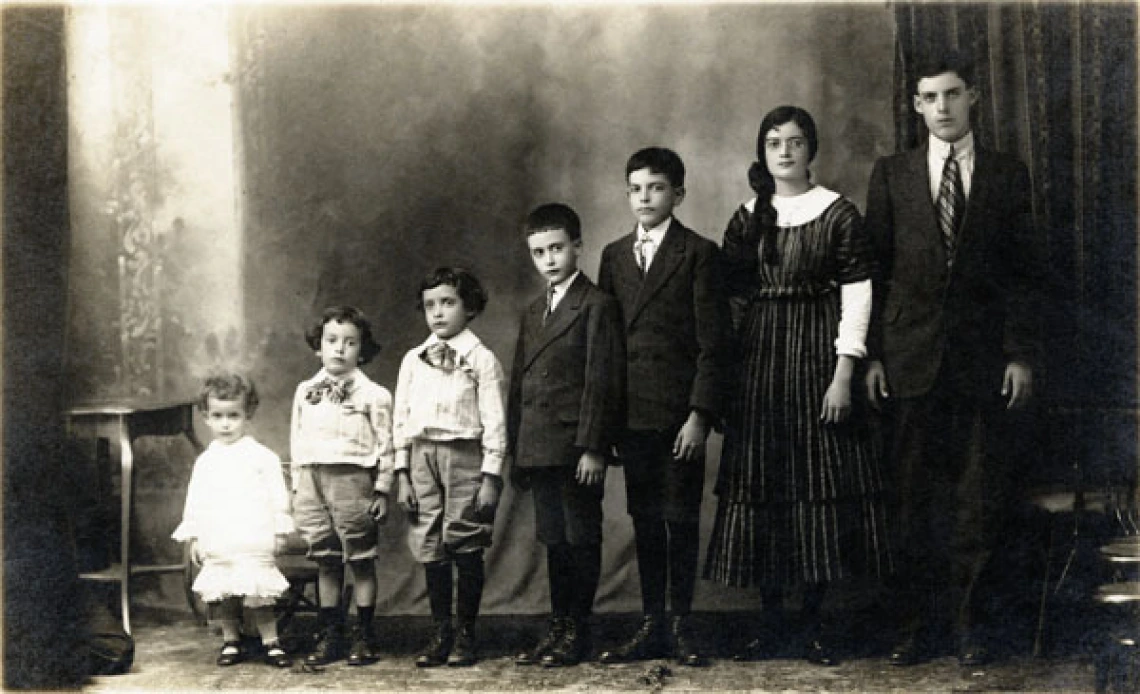De la Torre family papers

Fotografía de grupo de los hermanos Ignacio, María, Francisco, Alfonso, Luis, Edmundo y Carlos de la Torre.
Collection area: Borderlands
Collection dates: 1874-2003 bulk (bulk 1910-1946)
Papers, 1874-2003 (bulk 1910-1946). This collection contains the papers of the De la Torre family documenting their involvement in the Cristero Movement and their move from Central Mexico to Sonora including Nogales. The bulk of the collection consists of printed materials and photographs. The printed materials highlight the progress of the Movement and include religious and political pamphlets, newsletters, newsclippings, and Public Statements. The majority of photographs relate to the De la Torre family and friends. Some materials relate to Cristero political organizations such as Asociación Católica de la Juventud Mexicana (ACJM) and the Liga Nacional Defensora de la Libertad (LNDL) including a financial ledger and administrative documents. Other unique materials include a combat log, personal accounts, and political cartoons. Also included are the personal papers and correspondence of the de la Torre family. The majority of the material is in Spanish. This collection also contains over 280 books that can be found in the University of Arizona Library catalog under the title Cristero Movement Collection.
Born-digital material, found mainly on a thumb drive, has also been surveyed and processed to make available for public access.
The Cristero Movement (1926-1929) was a revolt by Catholics against the Mexican government that occurred in response to anti-Catholic legislation. This legislation began with the 1917 Constitution of Mexico but it was not until the presidency of Plutarco Calles (1924-1928) that these laws were enforced. President Calles added his own strict legislation severely restricting the clergy and Church in Mexico. The Cristero Movement originated in southern Mexico and moved north. The Movement lasted a decade and claimed over 100,000 lives. The Cristeros eventually achieved religious freedom in practice. Anti-clerical provisions remain a part of the Constitution but are unenforced. The De la Torre family, who had close ties to the Catholic Church and clergy, was instrumental in bringing the Cristero Movement to northern Mexico. The family, originally from Zacatecas and Guanajuato, moved to Aguascalientes and then in 1922 to San Luis Potosí. The family moved again to Tampico for economic reasons and finally to Nogales, both Sonora and Arizona, to escape persecution from authorities because of their involvement in the Church and Movement.
Ignacio De la Torre Berumen (b. 1878) and María De la Torre Uribarren (Velasco) (b. 1878) were the parents of eight children, many of whom were important figures within the Movement, both as priests and secular members. María (b. 1900) was a central support figure for the family and served as a point of communication and information. María's boyfriend, Fidel Muro, who was also involved in the Movement, was captured and executed in 1928. Ignacio (b. 1901) was a priest who became the vicar general of the Archdiocese of Hermosillo. He was active in education and founded several religious organizations. He was murdered in 1979 in Imuris, Sonora under mysterious circumstances. Both Francisco (b. 1905) and Carlos (b. 1914) became respected Jesuit priests. These three brothers were instrumental in reopening churches the government closed in Nogales. Alfonso (b. 1908), a Cristero soldier, was killed during fighting near Agua Caliente near the town of Suaqui de Batuc in 1935. Luis (b. 1910) was also involved in the Cristero Movement and later married. Neither Edmundo (b.1912) nor Benjamín (b.1918) were heavily involved in the Movement but focused instead on family and business.
The De la Torre family was acquainted with prominent figures of the Cristero Movement such as the priest Juan Navarrete. Several members of the family belonged to the Cristero organizations Asociación Católica de la Juventud Mexicana (ACJM) and the Liga Nacional Defensora de la Libertad (LNDL). Both María and Ignacio sometimes used pseudonyms in their correspondence and publications. María used the pseudonym Margarita Sofia and Ignacio used the pseudonyms Jose, Ysidro, Ismael Gomez, and Ismael Tizcareño.
A collection guide explains what's in a collection. New to using our collections? Learn how to use a collection guide.
Collection guideAccess this collection
Visit us in person to access materials from this collection. Our materials are one-of-a-kind and require special care, so they can’t be checked out or taken home.
How to cite
Learn how to cite and use materials from Special Collections in your research.
